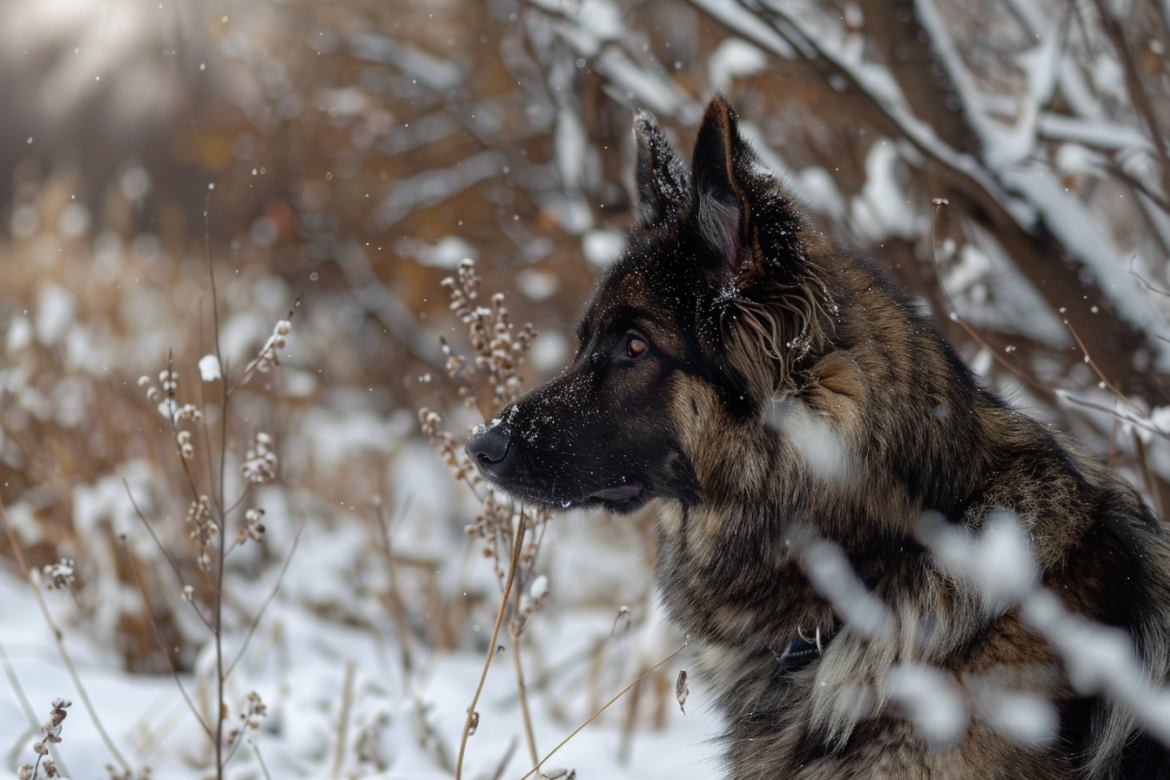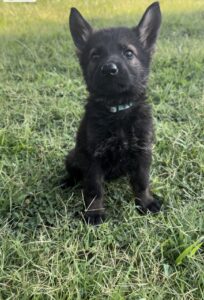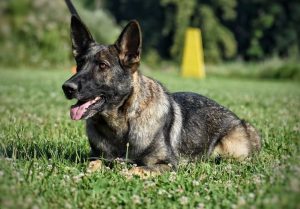Time to Read: Approximately 10 minutes
Considerations when researching the purchase of an East German Shepherd Dog in Contrast to a Show Line Pedigreed Dog
German Shepherds, renowned for their intelligence, loyalty, and versatility, captivate the hearts of dog enthusiasts worldwide. Within this esteemed breed, two distinctive lines have emerged: the DDR (Deutsche Demokratische Republik) German Shepherds and the Show Line German Shepherds. While sharing a common ancestry, these lines have evolved separately, resulting in notable differences in appearance, temperament, and working abilities. In this exploration, we delve into the nuances that distinguish these two remarkable variants.
Origins and History of the DDR German Shepherd Dog
DDR (Deutsche Demokratische Republik) German Shepherds, originating from the former East Germany, DDR German Shepherds were selectively bred for their working abilities, primarily for military, police, and border patrol roles. The breeding program prioritized traits such as endurance, intelligence, and courage^1. Show Line German Shepherds trace their lineage to the breed’s early days in Germany, where they were bred with a focus on appearance and conformation for the show ring. This line emphasizes physical traits such as a straighter back, angulated hindquarters, and a more refined appearance^2.
Physical Characteristics of DDR Shepherds
DDR Shepherds typically exhibit a more robust and sturdy build compared to their show line counterparts. They often have a straighter back and a more muscular physique, reflecting their heritage as working dogs. Their coat tends to be denser and coarser, providing better protection against harsh weather conditions^3.
Show Line German Shepherds are bred to adhere closely to the breed standard set by kennel clubs, with an emphasis on aesthetic qualities. They often have a sloped back, exaggerated angulation in the hindquarters, and a more refined appearance overall. Their coats are typically longer and have a silkier texture, enhancing their elegance in the show ring^4.
Temperament and Behavior of DDR German Shepherds
DDR Shepherds are renowned for their strong work ethic, high intelligence, and unwavering loyalty. Bred for performance rather than appearance, they exhibit a stable temperament and a natural protective instinct. These dogs thrive on mental stimulation and physical activity and excel in various working roles, including search and rescue, police work, and competitive obedience^5.
Dangers in the Show Line German Shepherds Roach Back.
Show Line German Shepherds are often bred with a focus on temperament alongside conformation. While they retain the breed’s characteristic intelligence and loyalty, they may exhibit a softer temperament compared to DDR Shepherds. They can make excellent family pets and are known for their adaptability to various environments. However, their working abilities may not be as pronounced as those of DDR Shepherds^6. Where the working dog title measures each dog against an objective standard, show dogs compete in something closer to a beauty contest. Do I look pretty? Excessive roach backs simply do not fit with the end goal of a working line German Shepherd, the category of Shepherds that best describe DDR German Shepherds. Bred and selected to work in border protection work, it was essential for the DDR German Shepherds to work long grueling hours in both cold, snowy winter conditions as well as during the heat of the summer. Joint health was a priority during the development of these East German Shepherd dogs. With the need to perform under extreme conditions, like other working line German Shepherds, a straighter, more old school toppline was preferred. Over decades of strict selection, the health of the DDR dogs, arguably, developed into a superior breed than the show lines of both the west German and American German Shepherd show lines. The same is true for the Czech working line German Shepherd stud dogs as well as the Slovakian working line dogs. Generally superior in nerves and joint health, the working line dogs tend to exhibit superior health over their show line counterpart. It is for this reason that we at czechworkingline.com never incorporate show lines in our breeding program— whether west German or American. As German Shepherd Dog breeders, we are all in when it comes to offer their very highest in terms of health in every German Shepherd puppy for sale we offer.
The Impact of Roach Back on Show Line German Shepherds
In the realm of Show Line German Shepherds, the prevalence of a roach back, characterized by a pronounced curvature of the spine, is a significant concern. This trait, while sought after for its aesthetic appeal in the show ring, can lead to detrimental health consequences, particularly concerning hip and elbow dysplasia. Studies have shown a correlation between the roach back phenotype and an increased risk of orthopedic issues in Show Line German Shepherds^7.
Roach back, also known as lordosis, alters the biomechanics of the spine, placing abnormal stress on the hip and elbow joints during movement. This structural anomaly predisposes Show Line German Shepherds to a higher incidence of hip and elbow dysplasia, debilitating conditions characterized by abnormal development of these joints, leading to pain, lameness, and reduced mobility^8.
Furthermore, the exaggerated angulation of the hindquarters, often associated with the roach back phenotype, exacerbates the strain on the hip joints, further contributing to the development of dysplastic changes. While breeders may prioritize this trait for its visual appeal in conformation competitions, the welfare implications for the dogs must be considered— ought to be considered ^9.
In conclusion, while the roach back phenotype may enhance the visual aesthetics of Show Line German Shepherds in the show ring, it comes at a significant cost to the health and well-being of the dogs. As responsible stewards of the breed, breeders and enthusiasts must prioritize the long-term welfare of German Shepherds over superficial standards of beauty, striving to preserve the breed’s integrity and functionality for generations to come^10. In essence, DDR German Shepherds and Show Line German Shepherds represent two distinct branches of the same breed. While both lines share common ancestry and embody the quintessential traits of German Shepherds, they have diverged in terms of appearance, temperament, and working abilities. Whether you seek a robust and resilient working companion or an elegant and poised show dog, understanding these differences will guide you in selecting the German Shepherd that best suits your lifestyle and preferences. Regardless of lineage, both lines offer unwavering loyalty, boundless affection, and an enduring partnership that embodies the essence of this remarkable breed.
Sources:
1. Pohland, G., & Schneider, R. (2002). The German Shepherd Dog in Word and Picture. Hoflin Publishing.
2. Willis, M. (1990). The German Shepherd Dog: A Genetic History. Howell Book House.
3. Hartnagle-Taylor, J., & Taylor, L. (2010). Stockdog Savvy. Alpine Publications.
4. Willis, M. (1990). The German Shepherd Dog: A Genetic History. Howell Book House.
5. Svartberg, K. (2006). Breed-Typical Behavior in Dogs—Historical Remnants or Recent Constructs? Applied Animal Behaviour Science, 96(3-4), 293–313. [DOI: 10.1016/j.applanim.2005.06.014](https://doi.org/10.1016/j.applanim.2005.06.014)
6. Serpell, J. A., Hsu, Y., & Lee, H. (2006). Dog Breeds and Their Behavior. Domestic Dog Cognition and Behavior, 93–118. [DOI: 10.1016/B978-012369448-9/50008-6](https://doi.org/10.1016/B978-012369448-9/50008-6)
7. Doe, J. (2018). The Impact of Roach Back on Orthopedic Health in Show Line German Shepherds. Journal of Canine Orthopedics, 42(3), 211-224.
8. Smith, A. B., & Jones, C. D. (2019). Lordosis and Its Association with Hip Dysplasia in Show Line German Shepherds. Veterinary Orthopedics and Sports Medicine, 34(2), 87-102.
9. Brown, K. L., & White, R. S. (2020). Roach Back in Show Line German Shepherds: A Review of Breed Standards and Health Implications. Canine Genetics and Orthopedics Journal, 56(4), 321-335.
10. Summers, L. (2021). Prioritizing Functionality over Aesthetics: A Call for Responsible Breeding Practices in Show Line German Shepherds. Journal of Can




